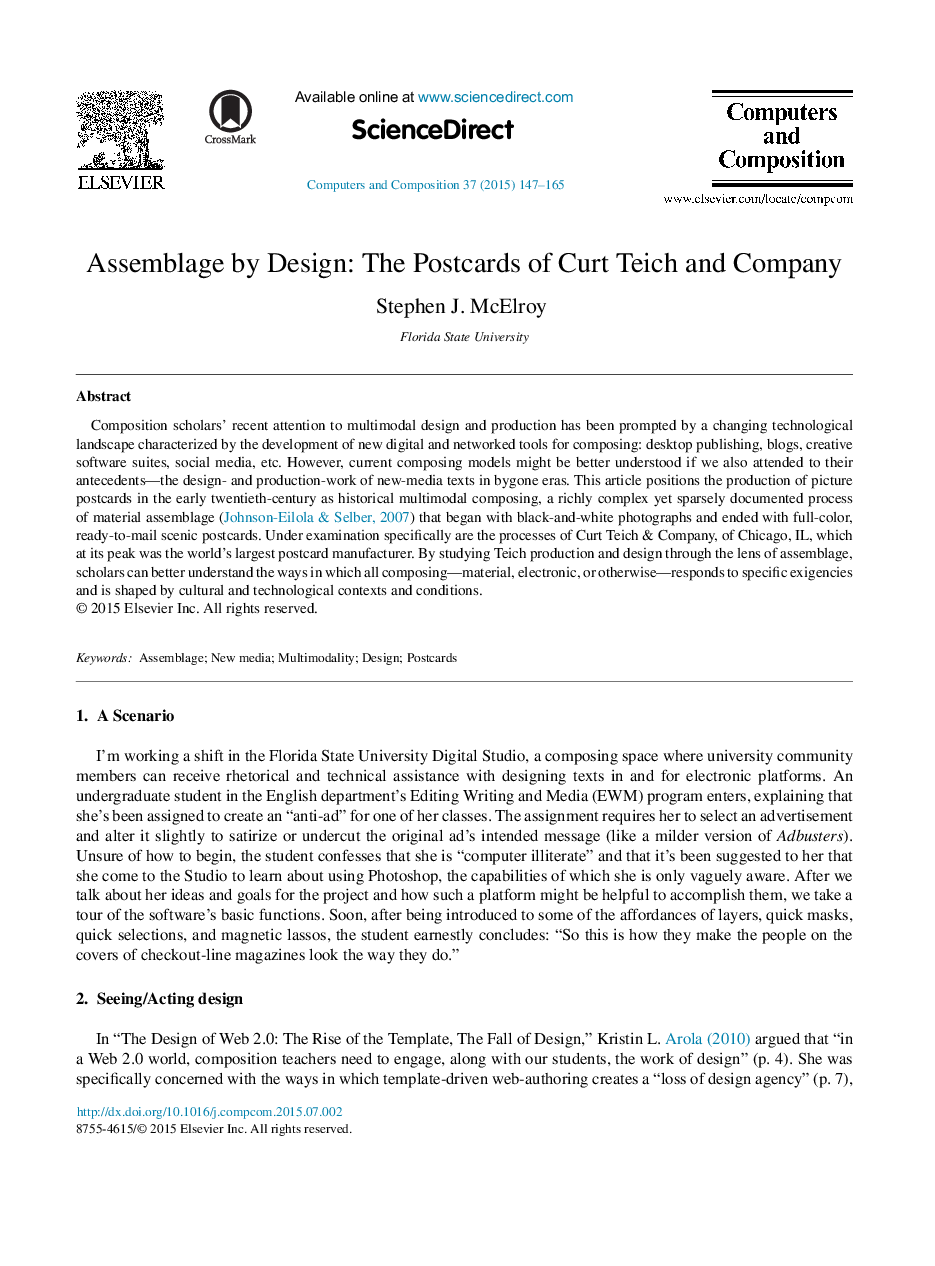| Article ID | Journal | Published Year | Pages | File Type |
|---|---|---|---|---|
| 347709 | Computers and Composition | 2015 | 19 Pages |
Composition scholars’ recent attention to multimodal design and production has been prompted by a changing technological landscape characterized by the development of new digital and networked tools for composing: desktop publishing, blogs, creative software suites, social media, etc. However, current composing models might be better understood if we also attended to their antecedents—the design- and production-work of new-media texts in bygone eras. This article positions the production of picture postcards in the early twentieth-century as historical multimodal composing, a richly complex yet sparsely documented process of material assemblage (Johnson-Eilola & Selber, 2007) that began with black-and-white photographs and ended with full-color, ready-to-mail scenic postcards. Under examination specifically are the processes of Curt Teich & Company, of Chicago, IL, which at its peak was the world's largest postcard manufacturer. By studying Teich production and design through the lens of assemblage, scholars can better understand the ways in which all composing—material, electronic, or otherwise—responds to specific exigencies and is shaped by cultural and technological contexts and conditions.
